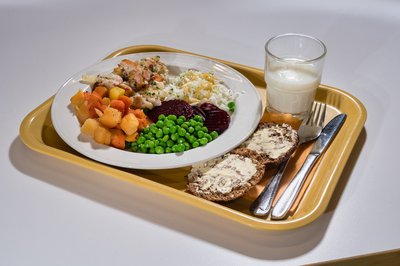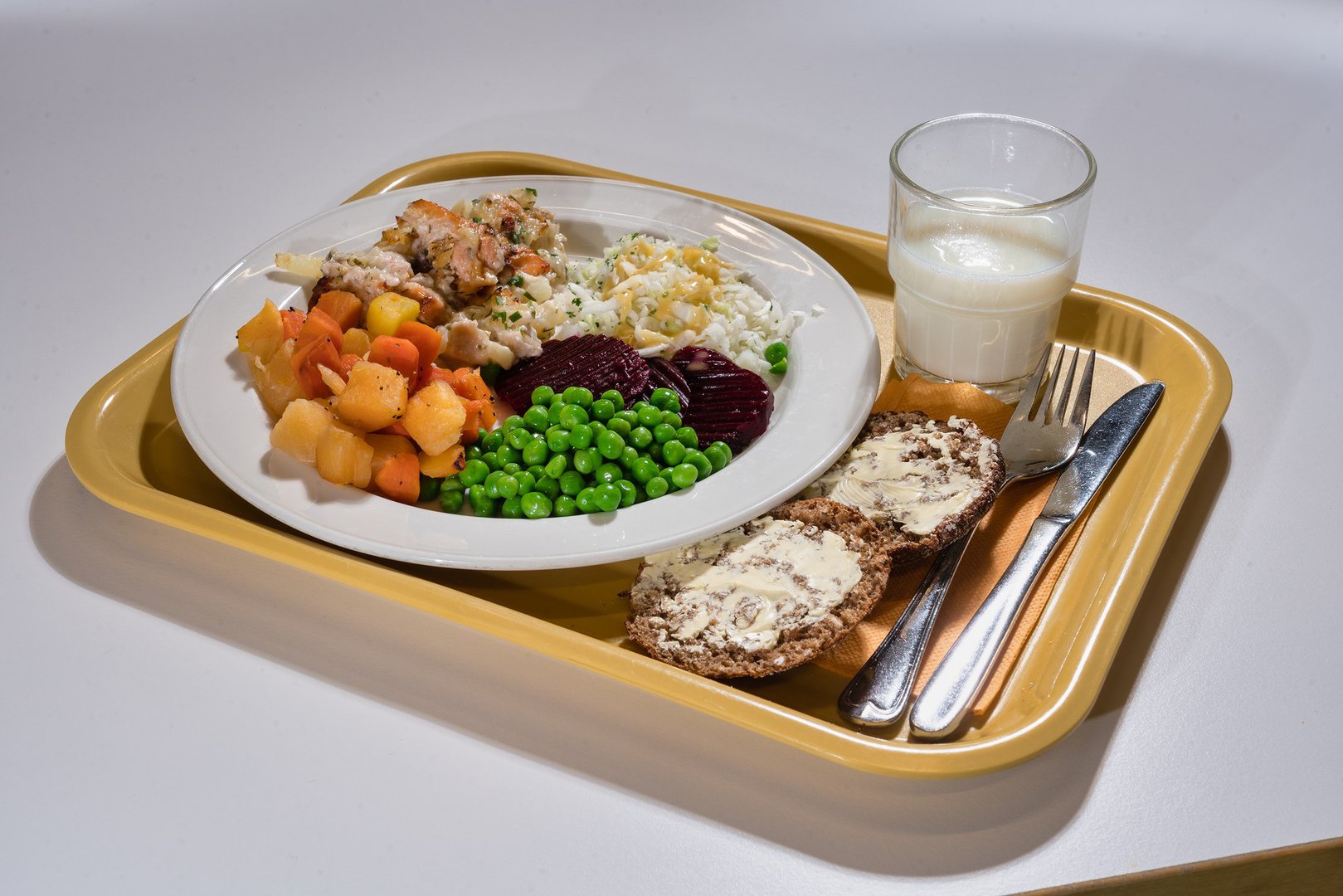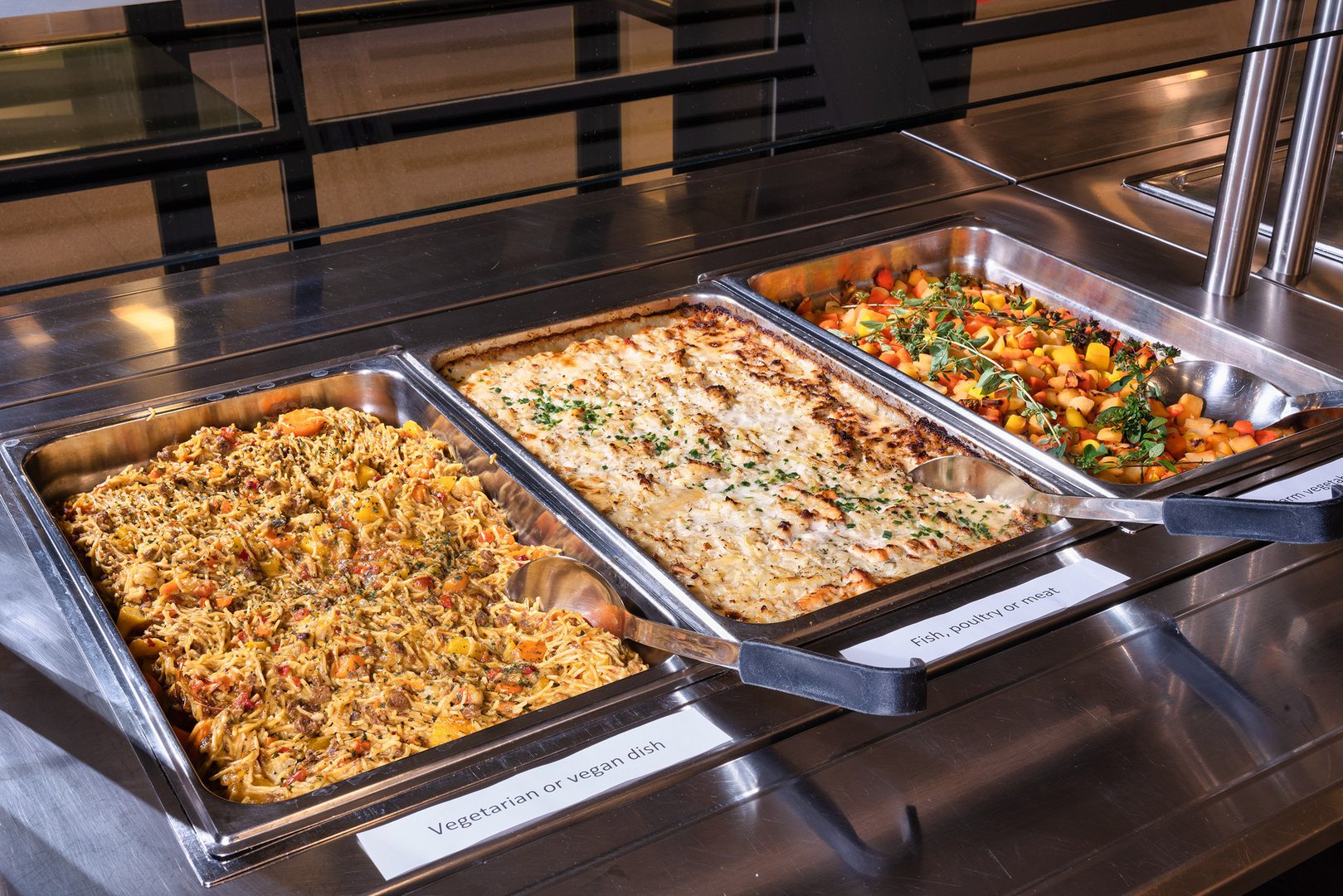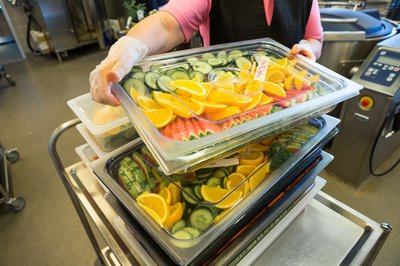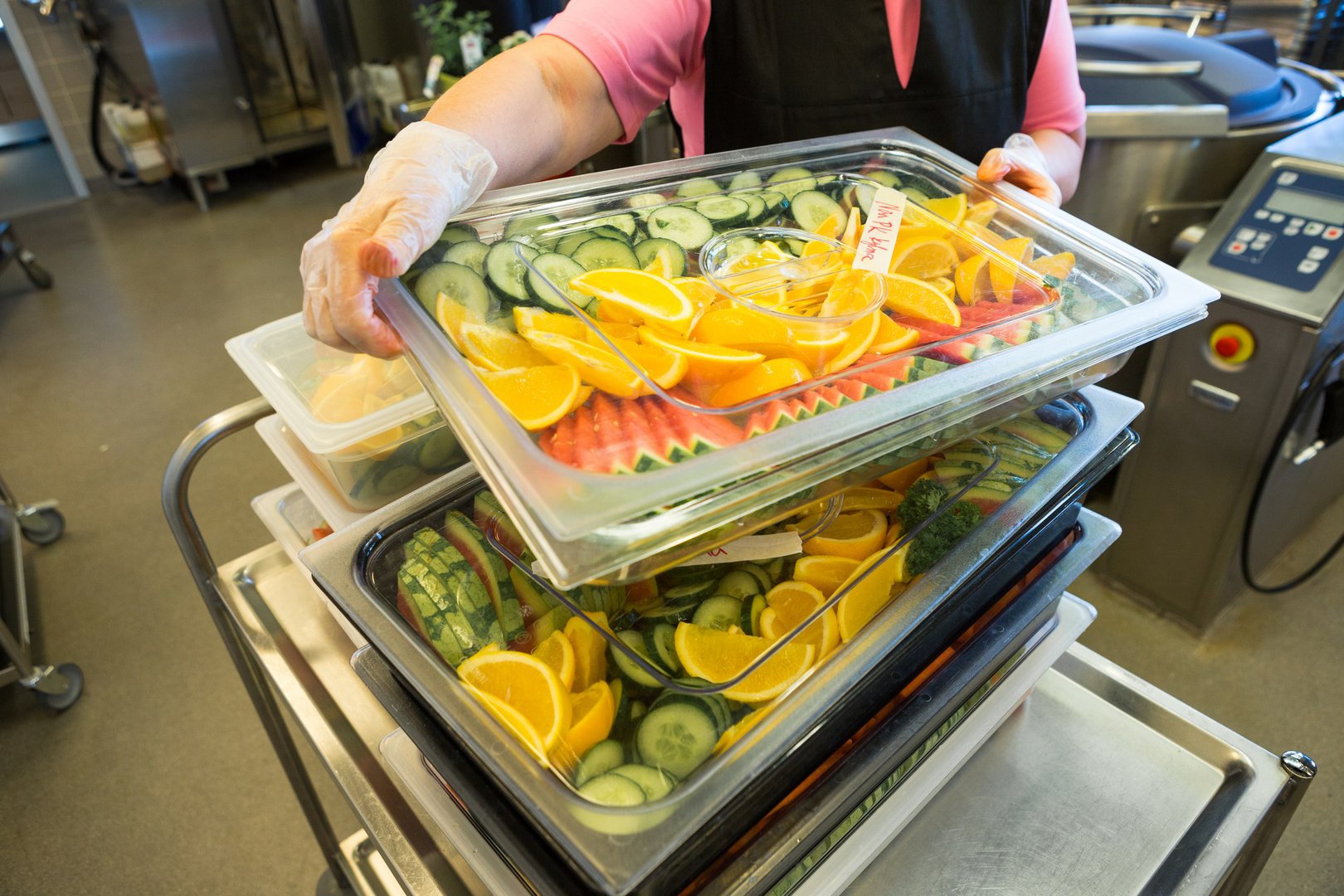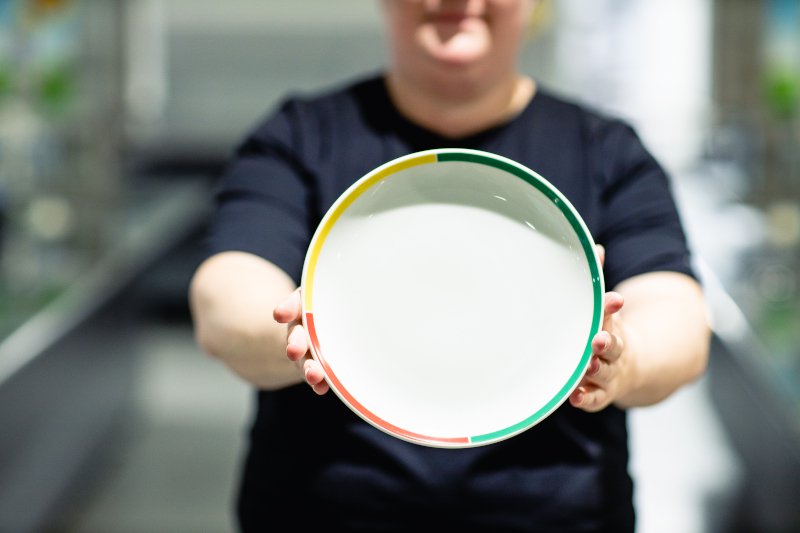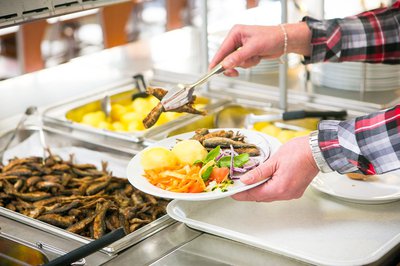Necessary Steps
- Meal providers can encourage plant-forward diets by offering different dishes with an increased emphasis on food from plants.
- Note that flexitarian diets include a range of different produce, and may entail mixed diet meals (with elements of fish, meat, dairy, etc.), meals with little meat and dairy content, vegetarian meals, or vegan meals (meals free of meat and dairy).
- A vegetarian diet may include milk and egg products (lacto-ovo-vegetarian), fish (pescatarian), or poultry (pollotarian).
- A vegan diet only includes foods from plants such as grains, legumes (peas, beans and lentils), vegetables, fruits, berries, nuts, almonds, seeds, and oils, as well as mushrooms.
- Public meal providers can start to offer customers options for plant-forward eating, which increases the weight and volume of food items of plant origin while allowing for different degrees of items of animal origin.
- Gradual changes can be introduced to the menu, such as the addition of one or two vegetarian and/or vegan meals per week.
- It is important to follow nutritional recommendations for various diets, as vegan diets in particular require complementary amino acids in plant proteins, fatty acids, vitamins, and minerals.
- Recipes need to be tested to ensure that suppliers have the correct equipment and are using the right production processes.
- The menus can be further developed based on the feedback received.
More Issues To Consider
- Food items of plant origin include (whole) grains, legumes, vegetables, fruits, berries, oils, nuts, almonds, and seeds, as well as mushrooms.
- Food items of animal origin include beef, goat, mutton, pork, poultry, and fish, as well as eggs and milk products.
- A balanced diet should provide the necessary nutrients for optimal health over a longer period of time.
- A vegan diet can offer balanced nutrition if it is planned in terms of complementary nutrients and vitamin supplements.
- A vegetarian diet that includes some animal-based products offers more easily balanced nutrition.
- Plant-forward eating should be promoted through the delivery of tasty, creative meals.
- It may take some time for customers to embrace their new plant-forward menus; adding frequent new dishes with a gradual increase in plant-based foods may help.
- Communicating with customers is important for ensuring good relations and an easier transition towards plant-forward eating.
